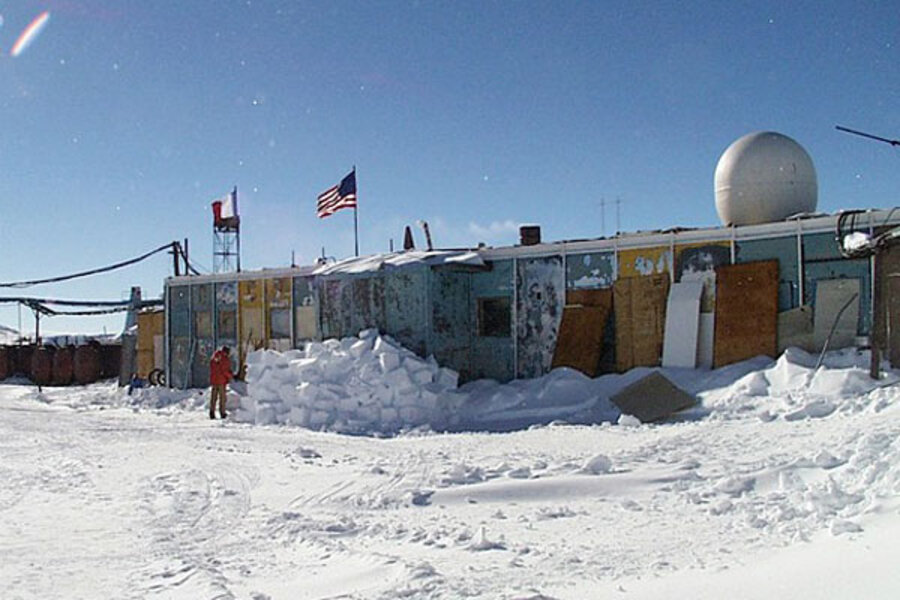New type of bacteria discovered in lake beneath Antarctic ice
A new type of microbe has been found at a lake buried under Antarctica's thick ice, according to news reports. The find may unveil clues of the surrounding environment in the lake, according to scientists.
The bacteria, said to be only 86 percent similar to other types known to exist on Earth, was discovered in a water sample taken from Lake Vostok, which sits under more than 2 miles (3 kilometers) of Antarctic ice. The freshwater lake has likely been buried, unaltered, under the ice for the past million years.
Russian scientists reportedly obtained the water samples in 2012 when they drilled all the way down to the lake's surface. They ran the bacteria's composition through a global database and were not able to find anything similar to its type. Scientists couldn't even figure out the bacteria's descendents.
"After putting aside all possible elements of contamination, DNA was found that did not coincide with any of the well-known types in the global database," said Sergey Bulat, a geneticist at the Saint Petersburg Institute of Nuclear Physics, in a quote attributed in media reports to RIA Novosti news service.
"We are calling this life form unclassified and unidentified," he added.
Understanding the environment
While the bacteria still needs to be confirmed, its potential is already drawing attention from other Antarctic scientists.
Life forms are shaped by the environment they live in, and often shape that environment in return. Finding out more about bacteria in Lake Vostok, therefore, will help researchers picture what living in the lake is like for these tiny microorganisms.
"The study of looking at the organisms and their environment is really the study of ecology," said Alison Murray, an associate research professor at the Desert Research Institute (an environmental research group based in Nevada) who also does Antarctic research herself.
"By learning more about the life forms that live in Vostok, that will probably teach us a bit about the lake itself," Murray told OurAmazingPlanet.
Murray, who is familiar with the Russian researchers' work, said the group is a "very careful team of scientists" who would have put the bacteria through several validity tests before releasing the news.
Understanding bacterial life on Earth is also considered a possible research direction for finding life on other planets, including Mars.
'If this is real, it is very exciting'
The 86 percent similarity figure, to Murray, is a plausible indicator that this could be a new type of bacteria. Since all Earthly life is related to each other in some way, anything below about 80 percent would draw concern, Murray added.
At least one other scientist, however, expressed caution about the finding, saying that more information is needed before drawing conclusions.
"If this is real, it is very exciting," Peter Doran, a microbiologist at the University of Illinois at Chicago, wrote in an e-mail to OurAmazingPlanet. He is a frequent visitor to the Arctic and Antarctica for his research.
"I would caution, though, that this type of 'press release' science is a little dangerous. It really needs to go through the rigor of peer review by other experts in the field before I'll jump on board," he said. "Having others looking at their methods and data will provide support for their conclusions."
Russian scientists successfully dug through to the buried lake again in January this year, retrieving more samples for later analysis.
Meanwhile, a British team had to call off their quest in December to dig to Lake Ellsworth, another Antarctic subglacial lake, after they encountered technical difficulties.
Follow Elizabeth Howell @howellspace. Follow OurAmazingPlanet @OAPlanet,Facebookand Google+.
- Gallery: Finding Life in a Buried Antarctic Lake
- Antarctica: 100 Years of Exploration (Infographic)
- Extreme Antarctica: Amazing Photos of Lake Ellsworth
Copyright 2013 LiveScience, a TechMediaNetwork company. All rights reserved. This material may not be published, broadcast, rewritten or redistributed.





